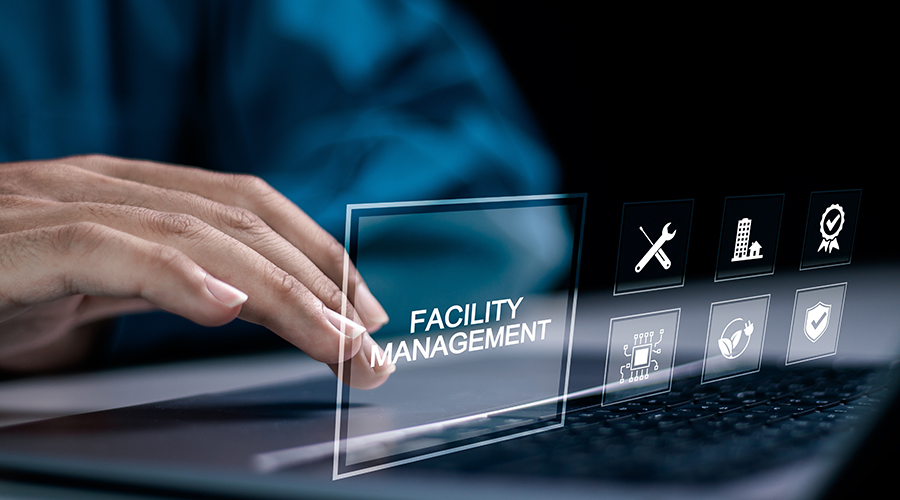Facilities and IT: Entering a World of Change
Jack Glass is, by his own definition, “a traditional facilities guy.” But he sees problems with the way facility departments look at mission-critical space. There is a disconnect between the usual ways that the facility department manages space and the particular needs of mission-critical space, say Glass and others in both the facility and IT fields. The result is that mission-critical spaces, such as data processing centers and telecom hotels, are not as reliable as they might seem or could be.
Glass’ concern was so keen it caused him to do something unusual. After his former company, Citibank, merged with Solomon Smith Barney to form Citigroup, he moved over to IT to help create a new hybrid facility department within IT called critical systems. Now, as senior vice president of critical systems, Glass manages Citigroup’s more than 350,000 square feet of raised-floor mission-critical space and reports to the director of IT.
Such a move reflects the need for facility executives to understand the business technology side of a company as much as the building technology side.
But facility change is slow and IT technology change is fast, so the question is whether facility executives can learn the needs of the technology quickly enough to avoid problems and prepare for needed facility system changes, rather than face costly building system upgrades down the road.
Getting Inside
Meeting the needs of mission-critical facilities may not require merging facility departments with IT, but it does mean that they have to begin working much more closely together for the good of business.
The facility department of First National Bank of Omaha has maintained a close relationship with its IT department by putting a facility office in the mission-critical building.
Dennis Hughes, lead property manager for First National, has built into his schedule monthly meetings with IT. He also receives daily reports from his facility staff on site.
“In the meetings, they let us know what they are up to, and we let them know what we have planned for the facility,” Hughes says. “Daily reports keep me abreast of conditions. We can’t react to something we don’t know about.”
The Cost Benefit
Because of the lack of coordination, a lot of mission-critical space may be just one small problem away from very serious consequences, says Alan Freedman, senior vice president of product development with ADP. The result of cooperating may not look like much on paper, but given the alternative, it can be quite profitable. “A cooperative effort simply says we did our homework up front, and took appropriate and reasonable steps based on business impact. The real penalty for not cooperating is what results when something unforeseen happens.”
Freedman recognized the need for cooperation nearly a decade ago when, as an IT professional with Bankers Trust, he led an effort to bring key personnel in facilities and IT together.
He credits the work of the facility staff in helping to save Bankers Trust from going down even one second after a ConEdison substation fire in Manhattan.
There are hurdles to cooperation, he says, having to do with how facilities and IT view their responsibilities within the company. The biggest of these is cost and how it should be measured.
“In the financial markets, $500 billion a day is transacted,” he says. “If a bank goes down for just a second, it risks losing millions.”
While Bankers Trust survived the substation fire with no down time, many financial institutions didn’t. Some took as long as eight days to get back online. Just failing to file required reports to the Federal Reserve Bank on time could mean millions of dollars in fines for financial institutions.
Those are issues that should resonate with facilities but don’t always.
“In real estate, cost is critical: first costs and operating costs,” Glass says. It drives most of facility planning. “Real estate likes to look back at what something did cost and use that for going forward,” he says. “We were always looking at what the average was for ‘X’ amount of square feet — whether it’s cooling or power or whatever.
“But in IT, it’s reliability. That takes precedence over cost.”
In his first two years with critical systems, Glass spent $60 million upgrading just two of the corporation’s 10 mission-critical spaces. But it’s money well spent, he says, because the loss of data could cost much more.
Freedman says he came under close scrutiny when facility bills came due for improving reliability at Bankers Trust. But when it was left standing while others foundered, Freedman and the facility department were the heroes.
Keeping Ahead of Changes
The ever-increasing need for power and cooling is one area that sets mission critical space apart from office space. Hughes has paid close attention to the transition to Blade servers. The technology is more efficient for IT, but the heat load is much greater. “Knowing that has helped us plan ahead for cooling them,” he says.
To IT, cooling may be the most important facility operation besides the reliability of power, and knowing IT’s need for this is critical to managing the mission-critical space.
Ken Brill, executive director of The Uptime Institute, says he is seeing insufficient attention paid to the specific cooling needs of servers and racks. Inconsistent cooling for this equipment could jeopardize its reliability.
As the watts per square foot increase, the computer room becomes a very highly engineered space where adherence to tight cooling tolerances is critical.
Too often, facilities look at the cooling load for the space on an average square foot basis. But, Brill says, that overlooks the needs of specific equipment. When mission-critical spaces are broken up into server and rack areas with hot aisles in between, those hot aisle areas don’t need to be cooled the same as the equipment. Simply monitoring ambient space temperature won’t cut it.
From his vantage point in IT, Glass is more plugged in to mission-critical technology than he ever was in the facility department. Armed with better information, Glass can plan for upgrades and design changes as computer technology changes, ensuring effective and reliable use of the mission-critical space.
One such development is called SANs or strong area networks, which having a big impact on facilities, he says.
SANs are taking data that was locally stored and putting it into a centralized mainframe storage area. The result is power densities are going from 40 watts per square foot to 68 watts per square foot and higher.
“Everything I hear from manufacturers now means greater power densities are going to be needed,” Glass says. Even Intel’s new, more energy-efficient chip — 40 percent more efficient — is likely to be stacked, increasing power density by 20 percent, he says.
This kind of knowledge doesn’t usually filter back to the facility department, yet it is crucial to how facility executives manage mission-critical space.
The trend in having facilities play an increasing role in IT facilities is evident by the number of calls Glass says he’s receiving from computer companies.
“They are beginning to seek out facility managers because they know the success of their technology depends on the facility manager,” he says.
Whether facility functions merge with IT, as with Citigroup, or remain separate entities doesn’t matter, Freedman says. He looks upon a cooperative effort as health insurance for the company.
“You pay and hope you don’t have to use it, but if you do, you hope that it is sufficient to see you through to recovery,” he says.
Related Topics:











